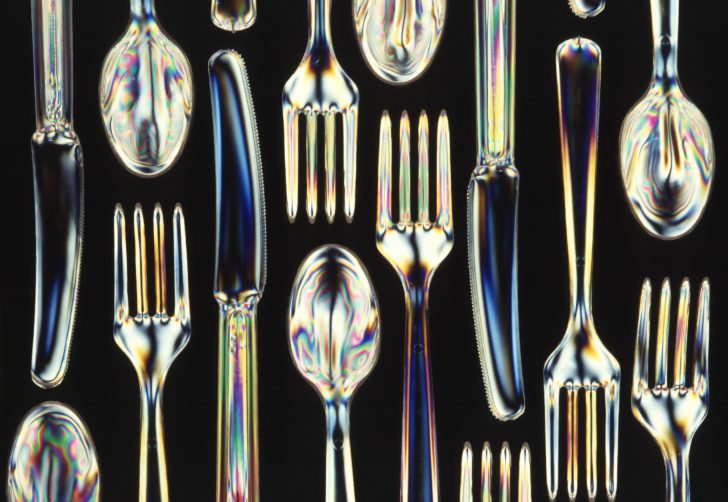Biologically degradable plastic

A research project has produced a possible alternative for common plastics.
Plastics is everywhere in our lives. To produce it, precious resources such as oil are needed, which makes the use of plastic particularly problematic when it is used in disposable packaging. The resulting plastic waste often ends up somewhere in the environment, resulting in one of the largest waste disposals in the pacific, which contains 80’000 tons of plastic and encloses an area of around 1.6 mio square kilometers – more than four times the size of Germany. This is only aggravated by the fact that it takes approximately 450 years until they decay into microplastic that sinks to the sea floor.
The German government counts biotechnology as one of the keys for a sustainable, future-oriented economy in its “high-tech strategy”. In this contex, Prof. Dr. Stephanie Stute from the Process Engineering Faculty at the Nuremberg Tech is conducting research on biologically produced plastics, which are biologically degradable. In her project, she is developing a continuous and therefore more profitable manufacturing process for the bio-plastic polyhydroxybutyrate (PHB).
“PHB is a colorless polyester and is generally considered a promising alternative to petrochemical polymers. Up until now the manufacturing costs for this bio-plastic is very high however, which is why it is currently not used at larger scale in industries”, explains Prof. Stute.
The current manufacturing process for PHB by bacteria can still be considerably improved in terms of efficiency. There are some bacterial species that store PHB as a storage substance in their cells. In order to use the metabolism of the bacteria in PHB-synthesis at a large scale, it is necessary to design different conditions separately for the cultivation of the bacteria on one hand and the subsequent PHB-synthesis on the other. “Quick cell division and the related microbial growth is only possible, when the bacteria are provided enough nutrients and oxygen. For the storage of PHB however, the bacteria have to be exposed to a scarce environment”, Prof. Stute says.
The new approach is based on two bioreactors operated in subsequent manner with continuous influx of nutrients. During the first of these stages the conditions are set for optimal microbial growth. During the second phase an intended lack of nutrients is set for the process of storing PHB in the bacteria to be triggered and amplified by the influx of selected nutrients. As a result, large amounts of PHB is produced. At the outlet of the second bioreactor, Prof. Stute’s team separates the bacteria from the nutrient medium and processes the PHB from microbial cells. C. necator, as an example stores up to 80% of its dry mass of PHB and therefore offers the potential for mass production.
The cost of the raw materials used in this process can make up a majority of total costs, which is why there is a strong interest in using low-cost industrial residual materials. For each ton of biodiesel produced, about 100 kg of crude glycerine arises as a byproduct. The industries in Germany often times can only sell the crude glycerine for low returns or even dispose of it with a fee, which is why there is plenty of the raw material available, making it possibly to drastically reduce the production costs of the bio-plastic. In her project, Prof. Stute has developed a cost-efficient manufacturing process on the basis of this crude glycerin, resulting in a bio-plastic which is also biologically degradable.
Prof. Stute’s project to produce biologically degradable bio-plastics was funded by the Staedtler-Stiftung with an amount of 40’000 euros and marks the starting point for other research projects in bioprocess engineering at the Nuremberg Tech as a contribution to a sustainable and knowledge-based economy.
Source (DE): http://www.chemie.de/news/1158073/biologisch-abbaubares-plastik.html?WT.mc_id=ca0259